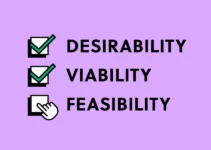Even the legendary developers roll their eyes or disappear when it comes to conversations about software documentation. If you are used to making apologies for the unprofessional state of documentation, you have to learn a few new tricks. You can always improve your documents using clickhelp.com. Now you can consider documentation as a bridge between software and human beings.
Why Do I Need Software Documentation?
Usually, developers prefer to avoid making software documentation as long as possible. They can try to find a professional writer to help them. Others, who were not so lucky to find an author, use the tools available online. Nowadays, this problem is less painful because of a wide range of advanced technologies made specifically for those who prefer to concentrate on developing rather than writing. Anyway, having a software document is an important step in communication inside any product developing process.
The lack of communication may not only scare away investors but create chaos inside the company. In case you are working with other developers or taking several days off, the absence of software documents will stop the work. It takes some time to create it, but in the end, you will clarify working processes and may even notice the way to improve something.

Img source: pexels.com
Major Requirements
There are lots of types of software documentation. You have to find out which one is the most suitable for your case. You can speak with the team or ask the customer. And after you discuss the details, keep in mind your target audience. They must understand your message. If they are coming back repeatedly, asking about the information you’ve written, you have to change the approach. Pay attention to the fact that your documents may be read not only by the team but by random stakeholders of your company, employers, and owners of the product too. Once you decide the main concerns of your readers, you can quickly decide what information to include:
- Developers that work with you need a guide on how to continue the work from the point you’ve left it;
- Editors usually want to understand the new features and how to highlight them;
- Owners of the product are more interested in services you and your team provide to coordinate them.
If you don’t know how to start the work, ask yourself the following questions:
- Who is my target audience?
- What will my reader do with this information?
- What does my reader need to know?
You don’t have to write a book for everyone. The best way is to share the document with the target group and ask whether you need to add something more. Yet, even one page of instructions made by you is better than nothing at all.
Few Simple Tricks
If you have never done anything like that before, you may need to check out software documentation available online or already made by your colleagues. There are lots of tutorials that help developers to improve their writing skills and ability to create reports. Consider it as a simple plan of your actions which you can later edit. Follow these recommendations:
- Make the first draft as the detailed plan. You can print it out;
- Use the red ink to add extra information you need to specify in this plan. You can uncover the bullet points you’ve made in several sentences each;
- Now check the structure of this document. You can change it if the moves look chaotic. Make it clear. If you can, use step-by-step instructions with bullet points.

img source: unsplash.com
The Body of Your Document
Let’s talk more about the structure of the file you will send to the readers. It must be crystal clear and possibly include tables. You will find hundreds of examples on the Internet. The most popular and possibly the simplest of them is this:
- Brief introduction of the project and its goals. You can also introduce yourself if you need it, just in one or two sentences;
- Table of possible architecture limitations;
- Context and system scope;
- Describe the strategy you picked that will bring you to a perfect solution to the problem;
- Explain the tools you are using for it;
- Name the time you are using for your action and name the deadlines if there are;
- Write down the extensions you want to provide in the future. Describe all the possibilities here or the new projects that may come out of this one;
- Explain the whole concept in the brief;
- Describe the decisions of design you want;
- You can create several quality scenarios for the product;
- Don’t forget to mention possible risks in the technical area;
- Create a detailed glossary if you need it.
Tutorials
You can decide to write documentation as a tutorial. It is helpful in case you want to teach beginners to perform your duties. Think about detailed information, no matter whether the person you are writing for is a newcomer or professional. This person still did not do the same work as you and may be unfamiliar with your daily routine. Tutorials are always a useful part of any document inside the company. They help others to follow your traces. Your co-workers must be able to complete the project even if you leave it. The best way to write a tutorial is to lead the reader through every step of your work. Use the bullet points and highlight the most significant steps.

Img source: pexels.com
How-to Guide
This type of software documentation is slightly different from tutorials since it helps the reader to solve the problem that occurs. Think about the major troubles on the way of your co-workers in the project. You can write them and share your recipe of how to navigate through them. How-to guides do not cover the entire process. Instead, they concentrate only on the most difficult points and unsolved problems. These guides are always easier to follow since you don’t have to read the book to find the solution.
Professional Approach to Software Documentation
If you have read this article, you may already know that it is not hard to create software documents. All you need is to focus your attention and make sure that your thoughts will be understandable for others. Use the simple recommendations mentioned above and make sure you have all the tools to make the best software documentation possible.



